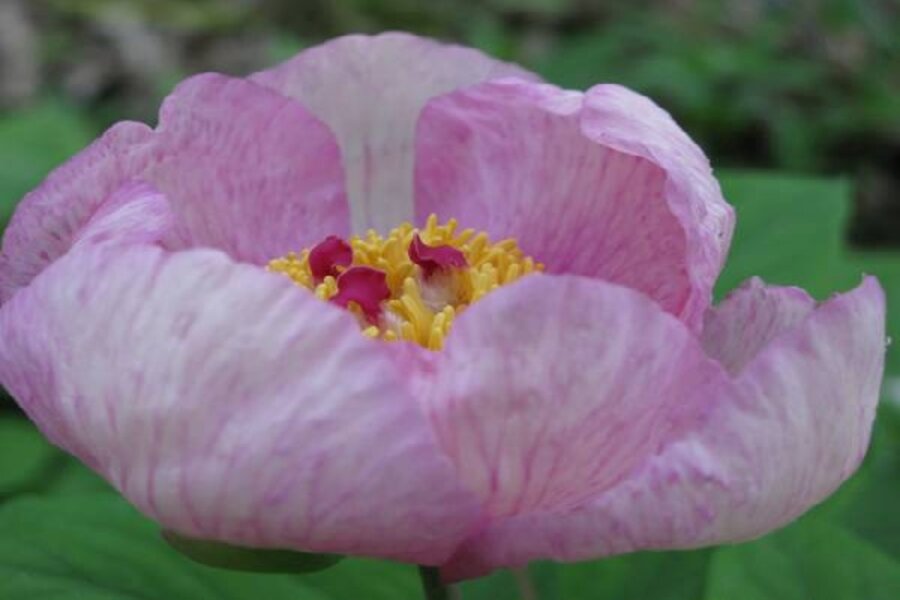Woodland peonies
Loading...
I have a “thing” about memorable plant names. It’s my Achilles heel -- a weakness, I know. When I come across a plant with an atypical moniker in a catalog, nursery, garden center, or big box store, I can’t pull out the credit card fast enough. It’s mine.
Campanula ‘Pink Octopus’? Mine! Hosta ‘Komodo Dragon,' H. ‘Out House Delight,' and Ranunculus ficaria ‘Brazen Hussy’? Mine, mine, and mine.
Oh, don’t get me wrong. I typically make my purchases in a sane, rational manner. But every so often, a sobriquet is so sublime it resonates passionately within that indiscernible and quirky fragment of my brain. It’s Pavlovian, and I’ve been trained to answer.
So it was with my first species peony. While browsing the catalog contents of a specialty nursery, Paeonia mlokosewitschii hardly made me blink, but the common name of “Molly-the-Witch” stopped me dead in my tracks.
As it turns out, this unexpected happenstance introduced me to the exceptional beauty of species peonies. Unlike many of their more common and gaudy hybrid cousins, which I also adore, species peonies – also referred to as woodland or mountain peonies – are the demure progenies of their wild ancestors.
They are members of a complex and often confusing family of plants, one that I confess I’m still trying to figure out. For example, it is said that Paeonia obovata var. alba is often confused with P. japonica -- a plant we’ll discuss next time -- which has very similar blossoms.
P. mlokosewitschii, the ethereally beautiful plant from the Caucasus mountains with the nearly unpronounceable name, is the “holy grail” of peony aficionados. It's a plant at once popular and frustrating.
Initially perceived as having only clear yellow flowers – the coveted “holy grail” -- it has now become clear that between natural variations and hybridization, which occurs even in the wild, the flowers may actually be cream, yellow, or pink-flushed cream.
Although I ordered what was listed as a yellow-flowered plant, my little elegant charmer is a pink-flushed cream with darker pink veining. Granted, I was mildly disappointed that the blooms weren’t yellow, however, to quote a line from a movie, when it opened that first bud, “it had me at hello."
In late March, this totally awesome beauty is one of the first perennials to break the frozen ground with its optimistic, rich-lipstick-red buds. The dusty shoots explode into a smoky mound of gray-green leaves that are unlike anything else this early in the season.
By late April, the seductive beauty of its perfectly formed goblets of ethereal petals filled with delicious golden stamens is at once bewitching and beguiling.
Bloom period is short, usually less than two weeks. And they are slow-growing and sometimes finicky about siting. But when all their cultural requirements are in perfect alignment, magic happens at the edges of the woodland garden.
Fall is a good time to plant them. Usually sold growing in containers, they may appear small when first purchased. But take heart, these queens of the early spring garden, although neither the showiest nor fastest growing, will mature within a couple of years into one of the most elegant and sophisticated plants to adorn your landscape.
Betty Earl, author of “In Search of Great Plants: The Insider’s Guide to the Best Plants in the Midwest,” writes a regular column for Chicagoland Gardening Magazine and The Kankakee Journal and numerous articles for Small Gardens Magazine, American Nurseryman, Nature’s Garden, and Midwest Living Magazine, as well as other national magazines. She is a garden scout for Better Homes and Gardens and a regional representative for The Garden Conservancy.
Editor’s note: For more Monitor gardening, see our main gardening page and our RSS feed.
You may also want to visit Gardening With the Monitor on Flickr. Take part in the discussions and get answers to your gardening questions. If you join the group (it’s free), you can upload your garden photos and enter our next contest.





